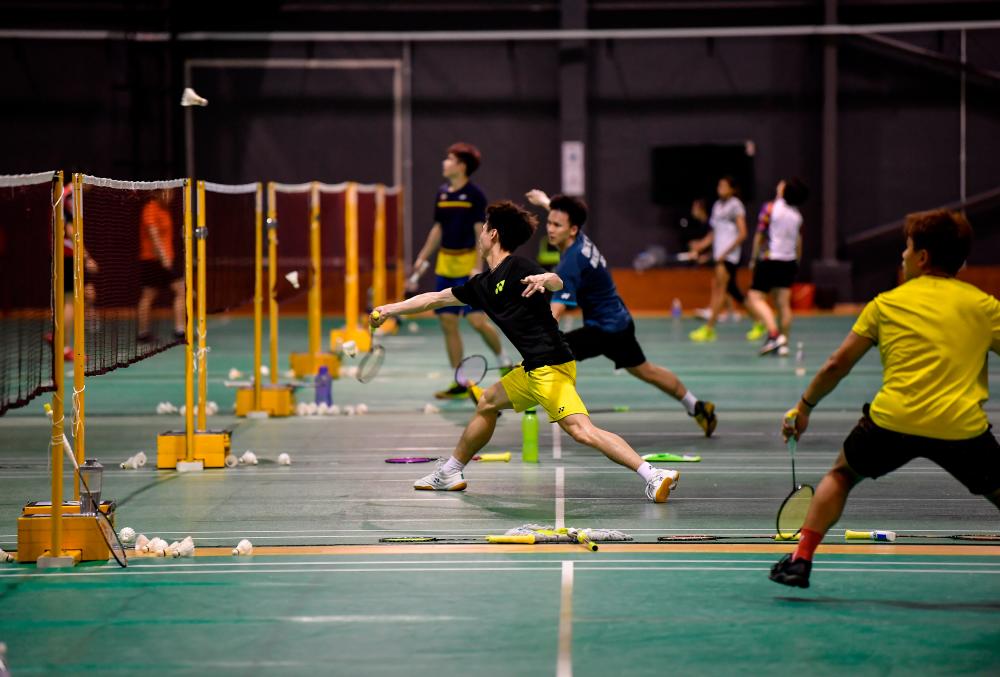

Elevate Your Game with Proven Badminton Training Techniques
Badminton is a sport that demands not only skill but also strategic and disciplined training. Whether you’re a beginner looking to establish a solid foundation or an advanced player aiming to refine your skills, effective badminton training is essential for success on the court. In this guide, we will explore various training techniques designed to take your game to new heights.
Foundational Fitness: Building Strength and Endurance
Before diving into specific badminton skills, it’s crucial to establish a solid foundation of fitness. Badminton is a physically demanding sport, requiring players to have strength, endurance, and agility. Incorporating cardio workouts, strength training, and flexibility exercises into your training routine will enhance your overall physical conditioning, allowing you to perform at your best during matches.
Dynamic Warm-up: Preparing Your Body for Action
A proper warm-up is essential to prevent injuries and optimize performance. Dynamic warm-up exercises, such as jogging, jumping jacks, and dynamic stretches, help increase blood flow to the muscles, improve flexibility, and mentally prepare you for the intensity of a badminton session. Spending 10-15 minutes on a dynamic warm-up can significantly enhance your training effectiveness.
Footwork Focus: The Core of Badminton Movement
Dynamic footwork is a hallmark of skilled badminton players. Training drills that focus on footwork help improve speed, agility, and court coverage. Cone drills, ladder drills, and shuttle run exercises can enhance your ability to move quickly and efficiently, ensuring you’re always in the right position to execute shots and respond to your opponent’s moves.
Racket Control Drills: Precision and Consistency
Effective racket control is fundamental to success in badminton. Training drills that emphasize precise and consistent racket movements are crucial. Shuttle control exercises, wall drills, and targeted shot placement practices enhance your ability to maneuver the shuttlecock with accuracy, giving you a distinct advantage during rallies.
Net Play Mastery: Close-Range Training
The net is a battleground in badminton, and mastering net play is a key component of a player’s skill set. Net play training involves practicing tight net shots, quick exchanges at the net, and deceptive drop shots. Developing finesse and control in close-range situations allows you to dominate the front of the court and dictate the pace of the game.
Smash Intensity: Developing Powerful Strokes
The smash is one of the most powerful and decisive shots in badminton. Training drills focused on smash intensity help develop the strength, technique, and timing required for impactful smashes. Incorporate jump smashes, multi-directional smashes, and shadow smashes into your training routine to make your offensive game more potent.
Strategic Doubles Training: Coordination and Communication
For doubles players, effective communication and coordination with a partner are paramount. Doubles training drills emphasize synchronized movements, strategic positioning, and quick exchanges with your doubles partner. These drills improve teamwork, ensuring seamless coordination during matches and creating a formidable partnership on the court.
Defensive Proficiency: Clears and Lifts
Strong defensive skills are crucial for withstanding opponents’ attacks and turning the tide in a rally. Training drills focused on defensive clears and lifts help players regain control of the rally and counter aggressive plays. Developing sound defensive techniques ensures resilience during fast-paced exchanges and provides opportunities to transition to offensive plays.
Match Simulation: Applying Training to Real Scenarios
While drills are essential, the true test comes in match scenarios. Incorporate match simulations into your training routine, replicating real-game situations. This approach allows you to apply the skills gained from training to practical scenarios, enhancing your ability to strategize, make quick decisions, and adapt to the dynamics of an actual match.
Continuous Improvement: Progressive and Structured Training Plans
Badminton training is an ongoing journey of improvement. Create progressive and structured training plans that address specific aspects of your game. Regularly assess your performance, identify areas for improvement, and adjust your training regimen accordingly. Consistency and dedication to structured training plans are key to continuous advancement.
For a comprehensive guide to Badminton Training techniques, visit Badminton Training and unlock the secrets to elevating your game.


